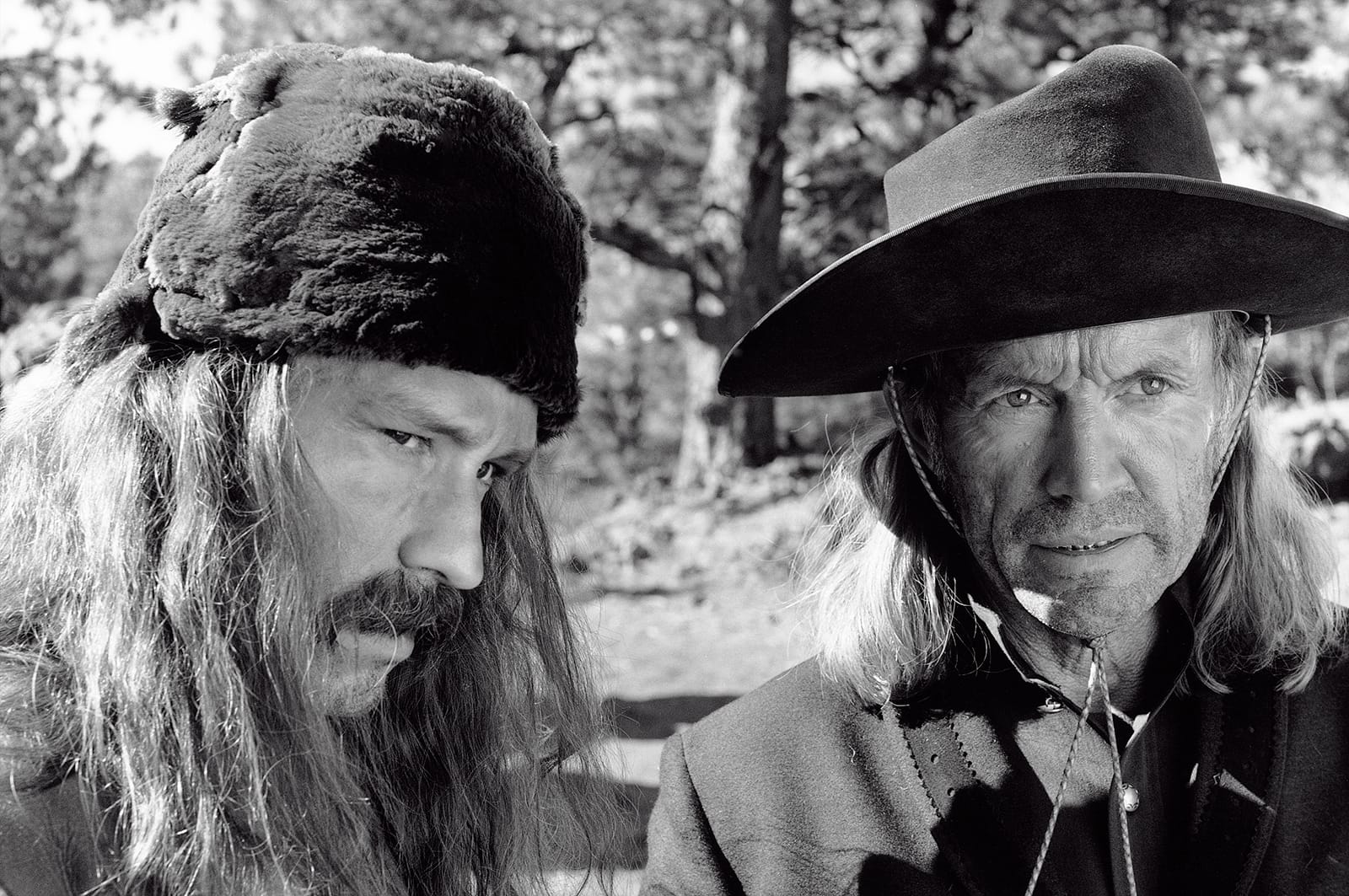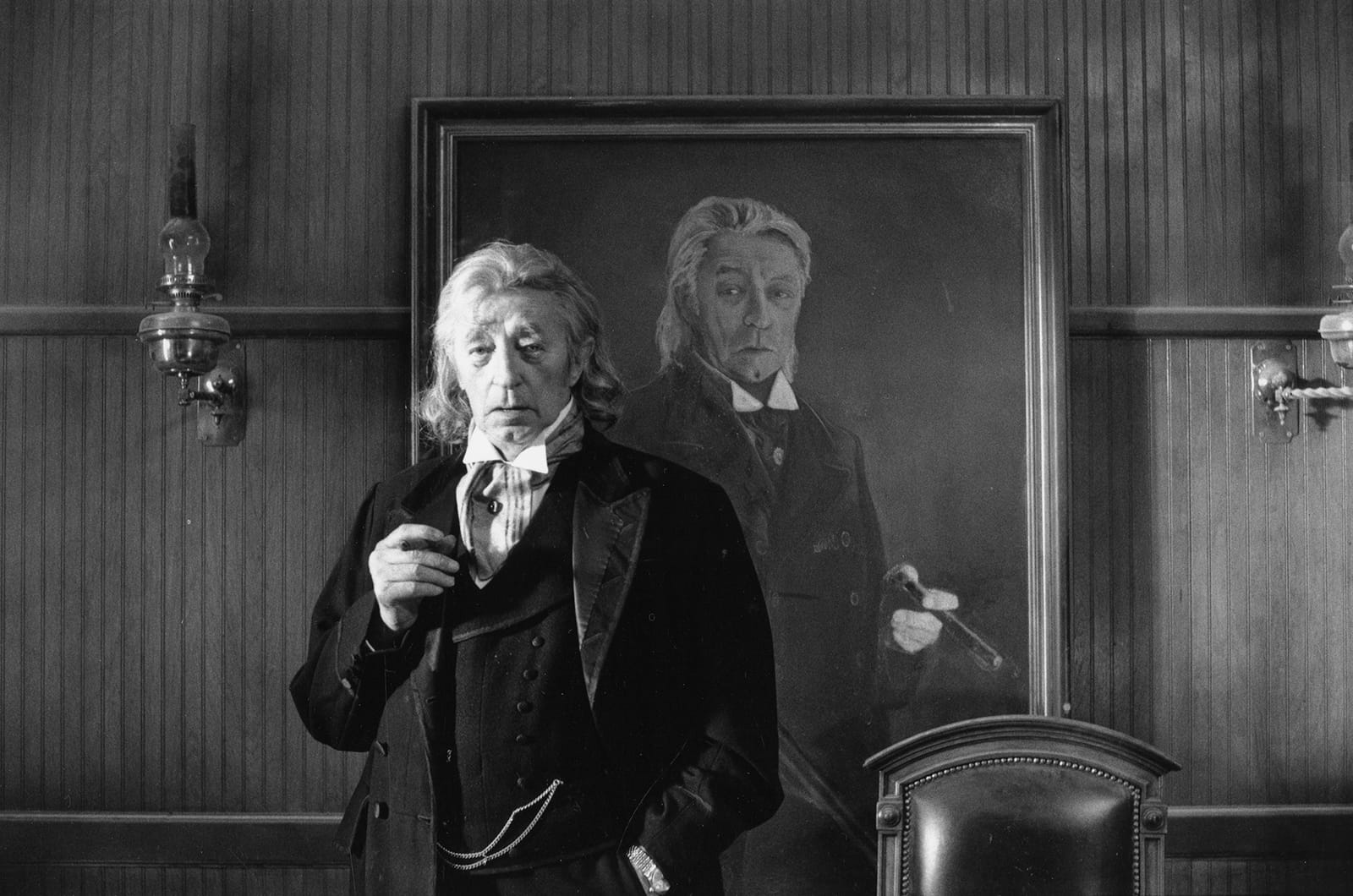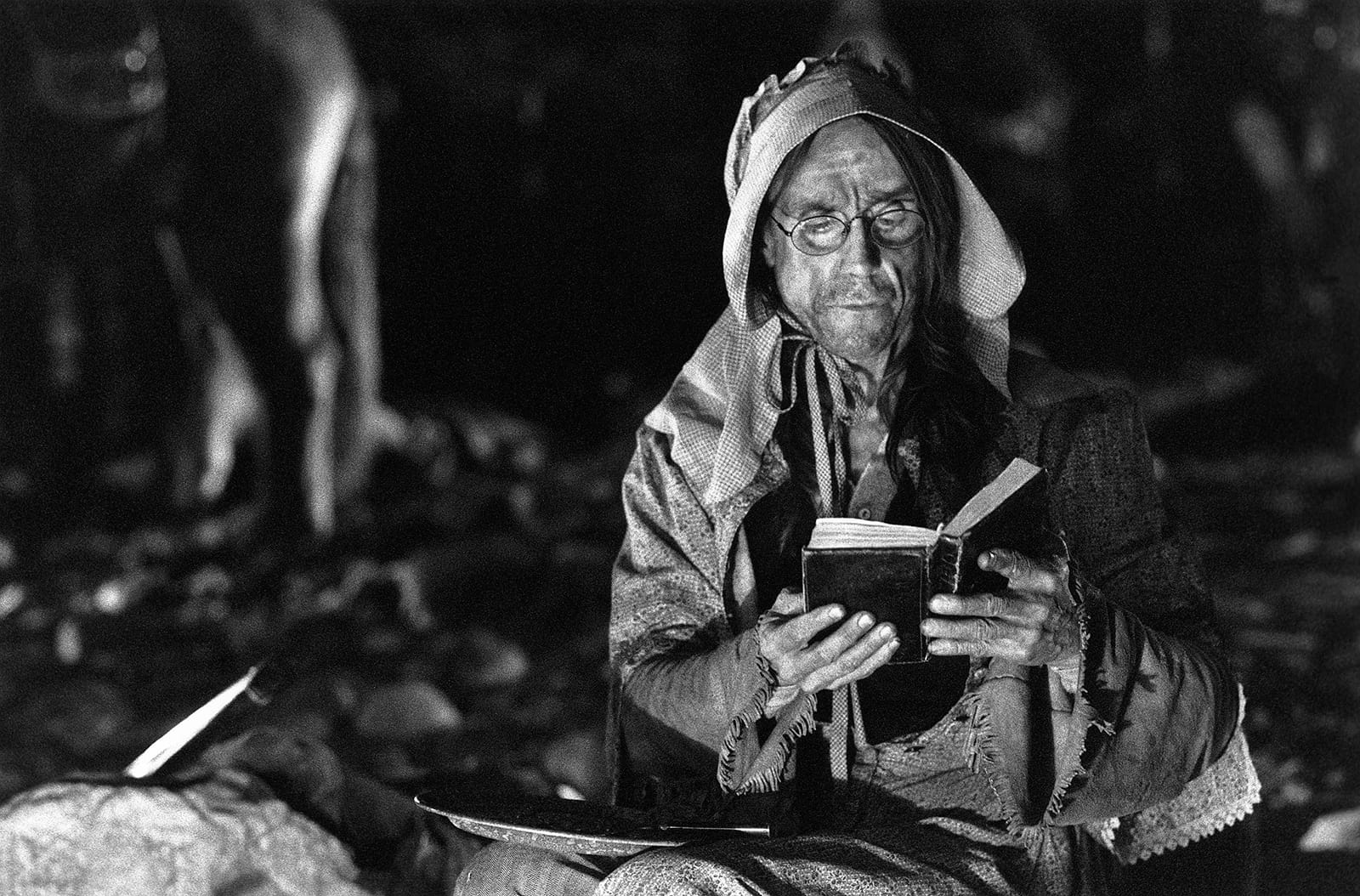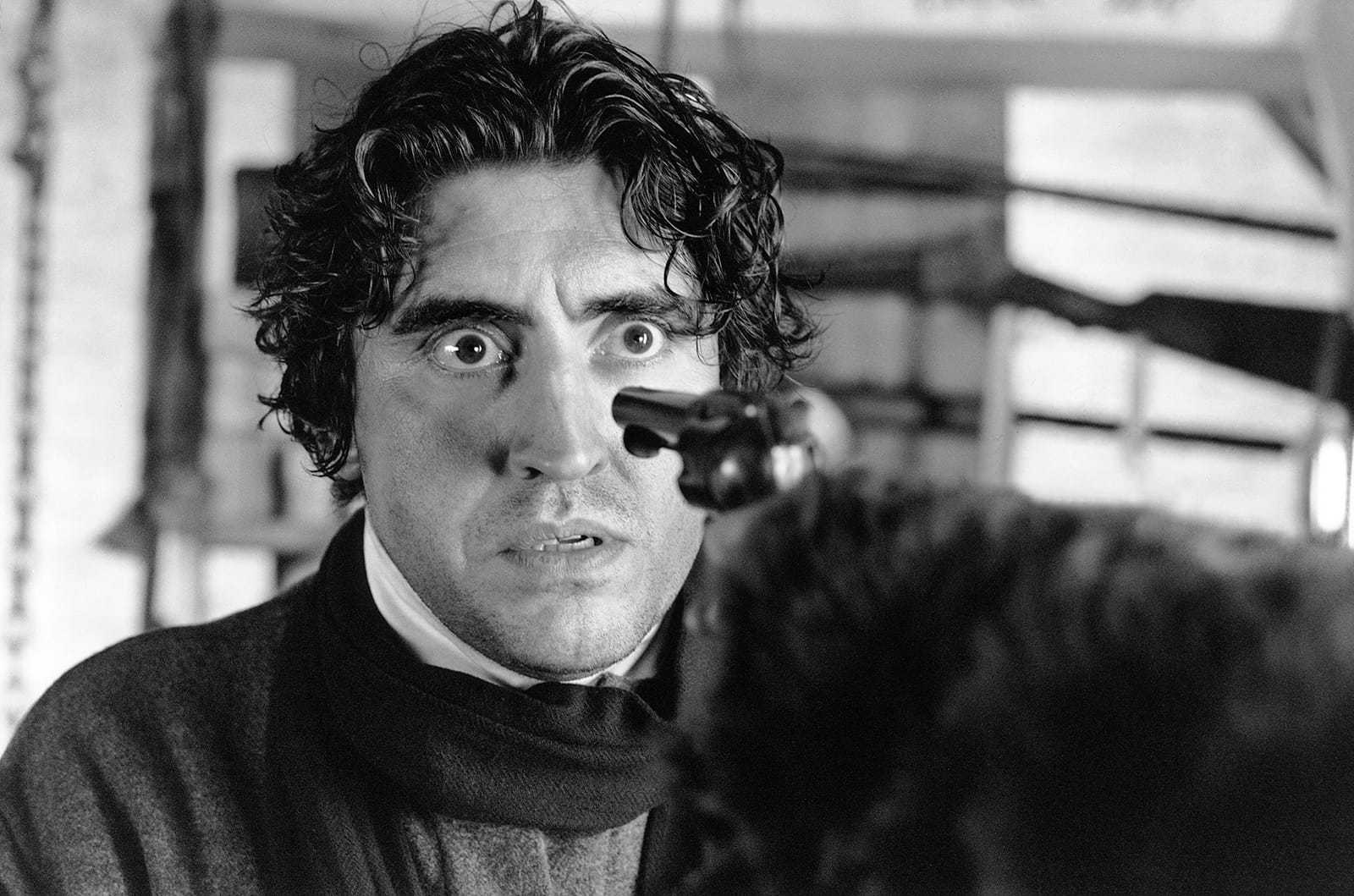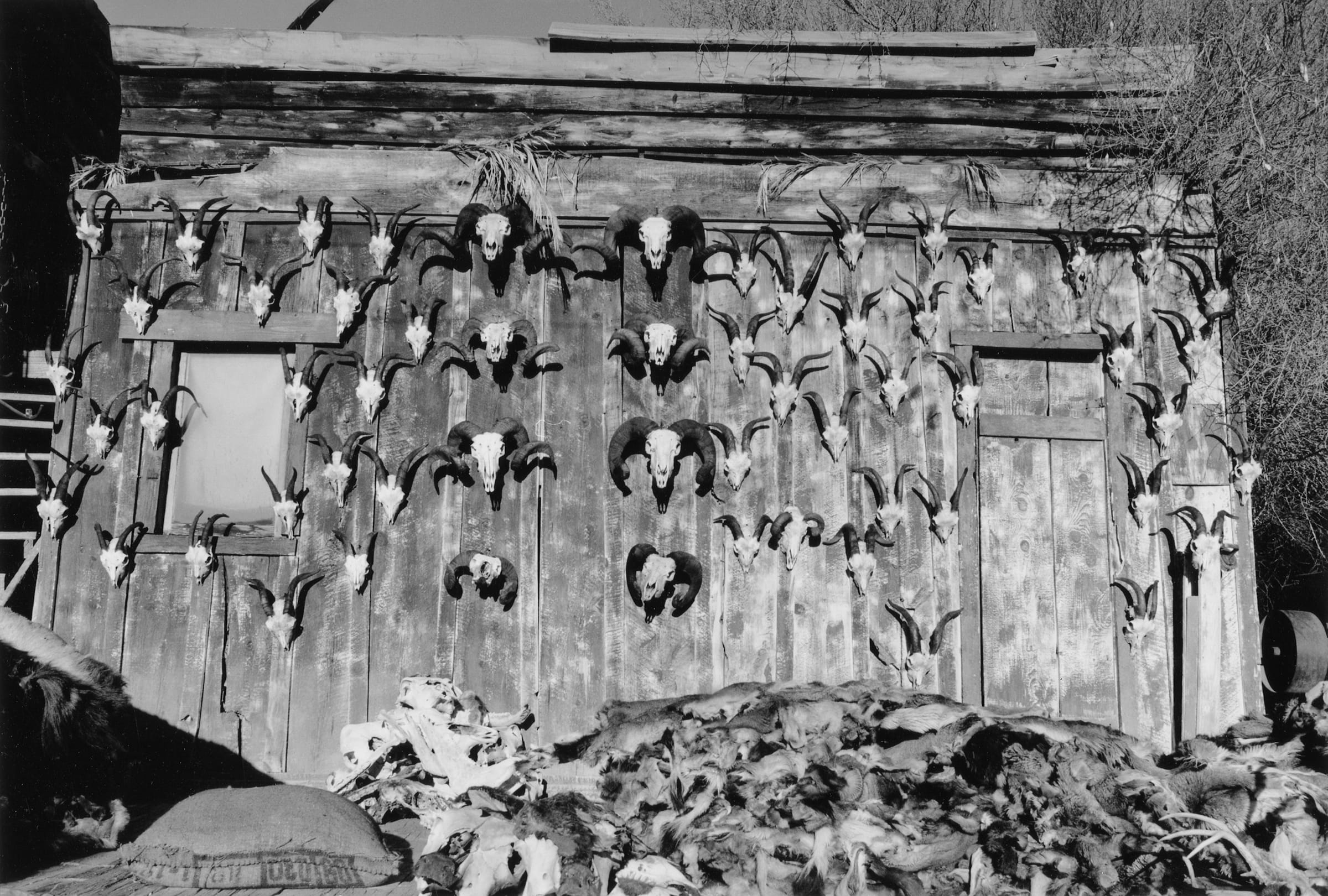Dead Man: Blake in America

Films don’t change in themselves over time, but the passage of time almost always affects what we make of them. Not so Jim Jarmusch’s Dead Man (1995), which confronts us with images of startling beauty combined with actions of devastating cruelty whose emotional power and mystery have not diminished in the more than two decades since its release. What do we mean when we say a narrative film is poetic? The answer is Dead Man.
A visionary, rather than revisionist, western, Dead Man describes the journey of two outsiders, William Blake (Johnny Depp) and Nobody (Gary Farmer), from the town of Machine, a mid-nineteenth-century frontier outpost of the Industrial Revolution, to the Pacific Northwest. Blake has blown his savings on a railroad ticket from his hometown of Cleveland to Machine, where he believes a job as an accountant for Dickinson Metalworks awaits him. No such luck. Someone else has gotten there first, and after Blake is mocked by the desiccated office manager (John Hurt) and his Kafkaesque staff, and threatened by Dickinson (Robert Mitchum), a self-aggrandizing titan of industry who has hung a life-size portrait of himself behind his desk, he’s out on Machine’s mean streets. There, starving inhabitants scavenge for food and demand blow jobs at gunpoint in alleys lined with the skeletons and skulls of all kinds of animals, including humans. Blake winds up in the bed of a jaded paper-flower seller, only to watch helplessly as her jealous boyfriend puts a single bullet through them both. She dies instantly, but Blake, though badly wounded, picks up the gun they’ve been playing with and, to his surprise, kills the boyfriend with the third shot. Mortally wounded, he escapes the house through an open window. A door might have been easier, but Blake is no longer making rational decisions, if he ever has.
There are several ways to read the narrative that evolves from this setup. One is that all of it is Blake’s dying vision. Another is that he has already died and is journeying through something like the bardo or purgatory. And still another is that Nobody, an outcast because his mother and father were from different tribes—Piikáni (Blackfoot) and Apsáalooke (Crow)—finds Blake in the wilderness and decides it is his mission to teach this “stupid fucking white man” how to “pass back through the mirror” by taking him on a trip across physical as well as metaphysical realms. It’s irrelevant which interpretation you prefer. Each has its own logic. What all of them point to is mortality as the preeminent existential condition of our lives. Nobody is baffled that Blake doesn’t know of his namesake, the English poet, or his work, which encourages us to acknowledge our death so that we can live fully in the present moment. Nobody encourages this in his William Blake, just as Dead Man does in the viewer.
“In Dead Man history becomes prophecy. When progress is defined by capitalism, the result is the pillaging and blighting of the natural world and its inhabitants.”
